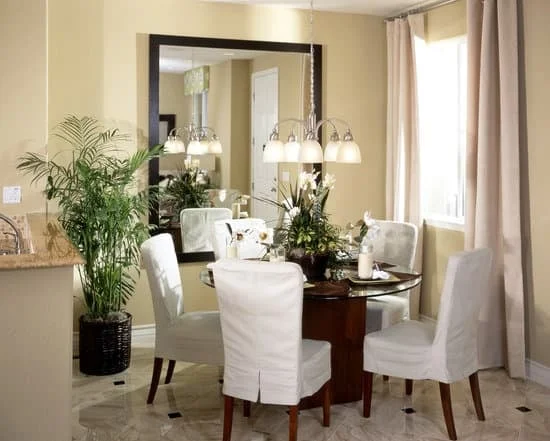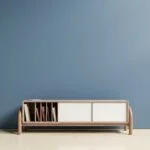Home decor plays a significant role in creating an inviting and comfortable living environment. The right aesthetic choices can have a profound impact on our overall mood, productivity, and sense of well-being. We all strive to design spaces that reflect our personal style and make us feel at ease.
However, there are times when despite our best efforts, we find ourselves discontented with our home decor choices. Whether it’s a mismatched color scheme or outdated furniture, feeling unsatisfied with your living space can be disheartening. Fortunately, there are steps you can take to address these concerns and create a home that truly reflects your vision and personality.
When dissatisfaction arises in terms of home decor, it is important to take a step back and assess the underlying issues at hand. Personal taste and functionality often play crucial roles in our discontent. It is essential to evaluate whether the current decor aligns with your preferences and if it enhances the functionality of your space.
Additionally, considering the overall appeal of your home decor can shed light on potential areas for improvement. By truly understanding why you are not satisfied with your current choices, you can better identify problem areas for targeted solutions.
Pinpointing specific aspects of your home decor that are causing dissatisfaction is the next step towards finding resolution. It could be outdated furniture that no longer suits your style or lacks organization leading to cluttered spaces. Perhaps a mismatch in color schemes creates visual discordance that leaves you feeling unsettled. Identifying these problem areas will allow you to focus your efforts on finding appropriate solutions tailored to address each issue individually.
Assessing the Issue
When it comes to not being satisfied with your home decor, it’s important to take a moment to assess the issue at hand. Understanding why you are feeling unsatisfied can help guide you in making the necessary changes and improvements. Start by considering factors such as personal taste, functionality, and overall aesthetic appeal.
- Personal Taste: One of the main reasons for dissatisfaction with home decor is that it does not align with your personal taste. Take some time to reflect on your style preferences and what truly makes you feel happy and comfortable in a space. Are there any specific design elements or colors that you have always been drawn to? By identifying your personal taste, you can start making choices that better align with who you are.
- Functionality: Another crucial aspect of home decor is its functionality. Ask yourself if the current layout or arrangement of furniture serves its purpose well. Perhaps there are areas that feel cluttered or lack proper organization. Consider how each room is used in your daily life and whether the current setup supports those activities efficiently.
- Overall Aesthetic Appeal: Lastly, evaluate the overall aesthetic appeal of your home decor. Does it create a cohesive and pleasant atmosphere throughout your living space? Look for any inconsistencies in color schemes or patterns that may be causing visual dissonance. Sometimes even minor adjustments like changing curtains or adding accent pieces can greatly enhance the aesthetic value of a room.
By taking a step back and honestly evaluating these factors-personal taste, functionality, and overall aesthetic appeal-you will gain valuable insights into what aspects of your home decor need improvement. This assessment lays the foundation for creating a more satisfying environment that truly reflects who you are while enhancing your quality of life.
Identifying the Problem Areas
When not satisfied with your home decor, it is essential to identify the specific problem areas that are causing dissatisfaction. Taking a close look at your current home decor and evaluating what is not working will help you understand the changes that need to be made. Several factors can contribute to dissatisfaction with home decor, including outdated furniture, lack of organization, or mismatched color schemes.
One common problem area is outdated furniture. Furniture plays a significant role in defining the overall aesthetic appeal of a space. If you have pieces that are worn out, faded, or no longer align with your style preferences, they can become a source of dissatisfaction. Take note of any furniture items that seem outdated and assess whether they can be repaired, repurposed, or if it’s time to consider replacing them.
Another problem area might be a lack of organization. Clutter and disorganization can lead to feelings of overwhelm and frustration in any space. Assess whether your current storage solutions are effective and adequate for your needs. Consider decluttering and implementing organizational strategies like investing in storage bins or shelving units that can help keep things tidy and accessible.
Mismatched color schemes can also contribute to dissatisfaction with home decor. The colors used throughout a space significantly impact its overall atmosphere and aesthetic appeal. Take a step back and evaluate whether the colors in each room harmonize well together or if there are jarring contrasts that detract from the overall cohesiveness. Identifying areas where color schemes clash will help guide you towards creating a more balanced and visually pleasing environment.
By identifying these specific elements causing dissatisfaction within your home decor, you can better prioritize which areas require attention and improvements first. This assessment will serve as an important foundation for embarking on the journey of revamping and enhancing the overall look and feel of your space.
Research and Inspiration
To begin the process of transforming your home decor, it’s important to gather research and inspiration from various sources. By exploring different avenues such as interior design magazines, websites, social media platforms, and even visiting showrooms or open houses in your local area, you can expand your knowledge and find ideas that resonate with your personal style. Here are some tips on how to make the most out of this research and inspiration phase:
- Interior Design Magazines: Subscribe to interior design magazines or visit your local library to gather a collection of magazines that showcase different styles, trends, and innovative ideas. Pay attention to color palettes, furniture arrangements, and decorative accents that catch your eye.
- Websites: Explore reputable websites that offer a wealth of design inspiration such as Houzz, Pinterest, or design blogs. These platforms provide endless images and articles on various aspects of home decor. Utilize search filters to narrow down your preferences based on specific rooms or themes.
- Social Media Platforms: Follow interior designers, home decor influencers, and hashtags related to home design on platforms like Instagram or Facebook. These platforms allow you to discover real-life examples of beautiful homes and gather ideas directly from professionals and enthusiasts alike.
- Showrooms and Open Houses: Take advantage of any opportunities to visit showrooms or attend open houses in your local area. This hands-on approach allows you to experience different styles firsthand and visualize how they could potentially work in your own space.
As you explore these different sources for research and inspiration, keep a notebook or digital folder where you can save images or jot down notes about specific details that stand out to you. Creating a visual library will help you identify patterns in your preferences and refine your vision for your ideal home decor.
Remember that this phase is about gathering ideas rather than making immediate decisions. Allow yourself time for exploration and contemplation before settling on specific choices. Ultimately, this research will serve as the foundation for creating a cohesive and satisfying home decor that reflects your personal taste and lifestyle.
Creating a Vision
When it comes to home decor, creating a vision is an essential step in achieving your desired outcome. Before making any changes or improvements, it’s important to take the time to consider your personal style, preferences, and lifestyle. This will help you identify what elements are truly important to you and ensure that your home reflects your unique taste.
One effective way to create a vision for your ideal home decor is by making a vision board. A vision board is a collection of images, colors, textures, and patterns that inspire you and represent the aesthetic you want to achieve in your space. It can be created physically by cutting out pictures from magazines and arranging them on a corkboard or poster board, or digitally using platforms like Pinterest.
Before starting your vision board, gather inspiration from various sources such as interior design magazines, websites, social media platforms (like Instagram or Houzz), and even visiting showrooms or open houses in your local area. Look for images that resonate with you and evoke the emotions or ambiance you want to create in your own home.
As you curate images for your vision board, pay attention to common themes or elements that reoccur throughout. This will help you identify patterns in terms of color schemes, furniture styles, textures, or overall aesthetic appeal. By understanding these preferences,.
you’ll have a clearer direction when it comes time to make decisions about which improvements to prioritize in your home decor journey.
Remember that creating a vision should be an enjoyable process where you allow yourself the freedom to explore different possibilities and experiment with new ideas. Additionally, keep in mind that this process may evolve over time as trends change or as you discover new inspirations along the way.
The most important aspect is to stay true to yourself and create a vision that aligns with your personal style, preferences, and lifestyle.
Budgeting and Prioritizing
Budgeting and Prioritizing: Discuss the importance of setting a budget for home decor improvements. Provide tips on how to prioritize different areas or elements within the budget, based on the level of dissatisfaction and impact on daily life.
Setting a budget is a crucial step when it comes to making home decor improvements. It helps establish financial boundaries and ensures that you make the most of your resources. When deciding on a budget, it’s important to consider factors such as the level of dissatisfaction with your current decor and the impact it has on your daily life.
One tip for prioritizing within your budget is to focus on areas or elements that have a significant impact on your overall satisfaction and quality of life at home. For example, if outdated furniture is causing considerable dissatisfaction, allocating a portion of your budget towards purchasing new pieces or reupholstering existing ones may be a wise choice.
Another consideration is to prioritize areas where you spend the most time or entertain guests frequently. These spaces tend to have a greater impact on your overall experience at home, so investing in their improvement can result in increased satisfaction. For instance, if you frequently host gatherings in your living room, allocating more funds toward updating its decor may be beneficial.
Lastly, don’t forget about functionality. If there are elements in your home decor that are hindering your day-to-day activities or causing frustration, addressing these issues should take priority. This could include rearranging furniture for better flow, adding storage solutions for better organization, or improving lighting for enhanced functionality.
By setting a budget and strategically prioritizing areas or elements within that budget, you can make meaningful improvements to your home decor without breaking the bank. Remember that it’s okay to start small and tackle one project at a time, gradually working towards achieving your desired results.
DIY Solutions
When it comes to improving home decor, there are plenty of do-it-yourself (DIY) solutions that can bring a fresh and personalized touch to your living space. Whether you’re looking to add a pop of color, repurpose old furniture, or create unique wall art, these projects can be both fun and rewarding. Here are some DIY ideas to inspire you:
- Painting Walls: One of the simplest ways to transform your home decor is by giving your walls a fresh coat of paint. Choose a color that complements your existing furniture and overall aesthetic. Before you start painting, make sure to properly prepare the walls by cleaning them and applying a primer if necessary. Consider using stencils or painter’s tape for creative patterns or accent walls.
- Repurposing Furniture: Instead of buying new furniture, consider repurposing what you already have. For example, you can give an old dresser a new life by sanding it down and applying a fresh coat of paint or stain. Add new hardware or switch up its use by converting it into a TV stand or entryway table.
- Creating Unique Wall Art: Personalized wall art can instantly elevate your home decor. Get creative with materials such as canvas, reclaimed wood, or even fabric scraps. You can create abstract paintings with acrylics, make a photo collage using favorite memories, or frame beautiful pieces of fabric to hang as artwork.
Tips for Successful DIY Projects:
- Plan ahead: Make sure you have all the necessary tools and materials before starting any project.
- Take measurements: Double-check measurements before cutting or painting to avoid mistakes.
- Practice safety: Use protective gear when needed and read product labels for proper usage.
- Follow tutorials and guides: Utilize online tutorials, step-by-step guides, or DIY books for guidance and inspiration.
- Take your time: Rushing a DIY project can lead to mistakes. Enjoy the process and take breaks when needed.
Remember, DIY projects are meant to be enjoyable and personal. Don’t be afraid to experiment, make mistakes, and learn along the way. By putting your own touch into your home decor, you can create a space that truly reflects your style and personality.
Seeking Professional Help
Seeking Professional Help:
When it comes to home decor, sometimes the issue at hand can seem overwhelming or require specialized skills that go beyond our own capabilities. In these situations, seeking professional help can be a valuable option to consider. Interior designers, decorators, and color consultants are experts in their field and can provide the guidance and expertise needed to transform your home.
Finding the right professional to assist with your home decor needs can seem like a daunting task, but there are resources available to help simplify the process. Here are some tips for finding and selecting the right professional for your specific needs:
- Ask for Recommendations: Reach out to friends, family members, or colleagues who have worked with professionals in the past. Ask about their experiences and whether they would recommend any particular individuals or firms.
- Online Directories: Utilize online directories that specialize in connecting homeowners with professionals in various industries. These directories often provide profiles, portfolios, and client reviews that can give you a better sense of each professional’s style and expertise.
- Local Showrooms and Events: Attend local showroom events or home decor expos where you can meet professionals in person and see their work firsthand. This allows you to get an initial impression of their design aesthetic and discuss your project directly with them.
- Social Media: Follow interior designers, decorators, and color consultants on social media platforms such as Instagram or Pinterest. This provides you with an opportunity to see their work on a regular basis and gain inspiration for your own project.
Once you have compiled a list of potential professionals, reach out to them for initial consultations. During these consultations, discuss your specific needs and desires for your home decor project. It is important to establish clear communication from the beginning so that both parties understand expectations and limitations.
Remember that hiring a professional does come with a cost, so it is important to set a realistic budget for their services upfront. Be prepared to discuss this budget during your consultations to ensure that it aligns with the scope of your project.
By seeking professional help, you can tap into their vast knowledge and skills to transform your home decor in ways that may not have been possible on your own. Their expertise can help you navigate challenges, make informed decisions, and ultimately create a space that brings you satisfaction and joy.
Revisiting and Adjusting
Once you have made the necessary improvements to your home decor and achieved a satisfying aesthetic, it is important to periodically revisit and assess your choices. Over time, our preferences and styles can evolve, and what once brought joy may no longer have the same effect. By periodically reevaluating your home decor, you can ensure that it continues to reflect your personal taste and provide long-term satisfaction.
One way to approach this process is by setting aside time every few months or once a year to walk through each room of your home with a critical eye. Take note of any areas or elements that no longer feel cohesive or bring you joy. This could include outdated furniture, worn-out textiles, or accessories that no longer fit your evolving style. By pinpointing these issues, you can begin brainstorming potential solutions.
Embracing change is an essential part of keeping your home decor fresh and satisfying. As you evaluate your current decor choices, be open to adjusting them as needed. This could involve rearranging furniture for better flow and functionality or incorporating new colors and patterns into your existing scheme. Don’t be afraid to experiment with different ideas and take risks with your decor – after all, it is meant to reflect your unique style.
Remember that home decor is not static; it should evolve along with you. As you grow as an individual and experience new influences, your taste in design may change as well. Stay inspired by regularly seeking out new sources of inspiration such as interior design magazines, websites, and social media platforms. Explore different design styles and gather images that resonate with you. These images can then serve as the basis for creating a vision board for future home projects.
By periodically revisiting and adjusting your home decor choices, you can ensure that your space remains a reflection of who you are while fostering long-term satisfaction with your surroundings. So don’t be afraid to embrace change, explore new ideas, and make adjustments along the way – after all, your home decor should continue to bring you joy and enhance your quality of life for years to come.
Conclusion
In conclusion, achieving the desired home decor and improving overall satisfaction is possible with patience, effort, and creativity. Throughout this article, we have discussed several key points to consider when not satisfied with home decor choices.
Firstly, it is important to assess the issue by evaluating personal taste, functionality, and overall aesthetic appeal. Identifying specific problem areas such as outdated furniture or lack of organization can help pinpoint areas for improvement.
We then explored the importance of research and inspiration in order to gather ideas and explore different styles. Creating a vision board or collecting images that inspire can help clarify personal preferences and guide the decision-making process.
Setting a budget and prioritizing different areas or elements within that budget are also crucial steps in improving home decor. By understanding the level of dissatisfaction and impact on daily life, readers can allocate resources effectively.
For those who enjoy DIY projects or have a tight budget, we provided a range of DIY solutions for improving home decor. Simple projects like painting walls or repurposing furniture can have a big impact on transforming the space.
However, if the home decor issue feels overwhelming or requires specialized skills, seeking professional help from interior designers, decorators, or color consultants may be necessary. These professionals can offer valuable expertise to transform the home according to individual needs and preferences.
Lastly, it is important to periodically revisit and adjust home decor choices as personal preferences evolve over time. Embracing change is essential in maintaining long-term satisfaction with your living space.
In closing, remember that achieving desired home decor is a journey that requires patience and effort. With creativity and an open mind to evolving preferences, it is possible to create a space that brings joy and improves overall satisfaction. So don’t be discouraged if you’re feeling overwhelmed or frustrated – take one step at a time and soon enough you’ll see your desired vision come to life in your own home.
Frequently Asked Questions
What to do with decorations you don t want?
If you have decorations that you no longer want, there are a few options to consider. Firstly, you could try repurposing them or giving them a fresh look with some DIY projects. Sometimes a little creativity can completely transform an unwanted decoration into something new and exciting.
Another approach is to donate your unwanted decorations to local charities, thrift stores, or community centers. This way, someone else might find joy in using them while also reducing waste. Lastly, if the items are still in good condition, you could consider selling them online or hosting a yard sale to recoup some of their value and make room for new decor that better aligns with your tastes.
How do I stop being overwhelmed by decorating?
Being overwhelmed by decorating is a common feeling, but there are strategies that can help alleviate this stress. Start by breaking the task into smaller, manageable steps. Set priorities and tackle one area at a time instead of trying to do everything at once.
It can be helpful to create a plan or vision board before beginning so you have a clear direction for your decorating project. Also, remember that it’s okay to ask for help from friends or family members who may have an eye for design or be willing to lend a hand during the process. Additionally, taking breaks when needed and practicing self-care can reduce overwhelm and help maintain focus throughout the decorating process.
How do you decorate a house you don’t like?
Decorating a house you don’t like can be challenging but not impossible! The first step is identifying what specifically you dislike about the house and determine if any changes are possible within your budget and constraints (e.g., renting vs owning). Sometimes simple fixes such as painting walls, changing curtains or blinds, updating lighting fixtures, or rearranging furniture can make a significant difference in creating a more pleasing environment.
Adding personal touches like artwork or accessories that reflect your style can also help create an atmosphere you enjoy. Furthermore, focusing on areas of the house that you do appreciate or have more control over can make the less-liked aspects seem less important. Finally, remember that home decor is subjective, so even if your preferences differ from the current style, embracing your unique taste and creating a space that brings you comfort and happiness is what truly matters.

I’m thrilled to be your companion on this exciting journey through the world of home decor and design. With a passion for turning houses into homes and a keen eye for the finer details, I’m here to help you transform your living spaces into beautiful, functional, and meaningful havens.





